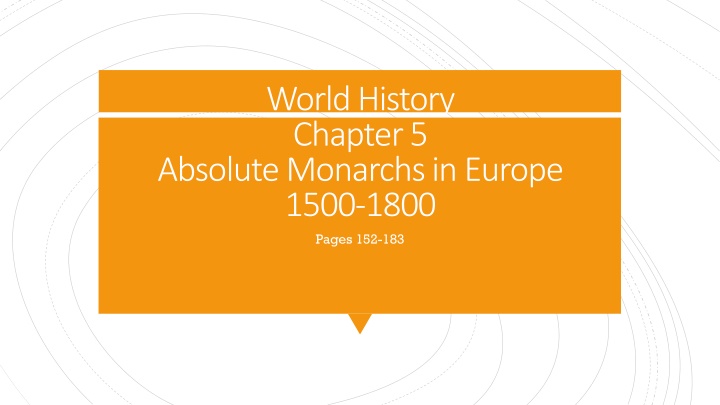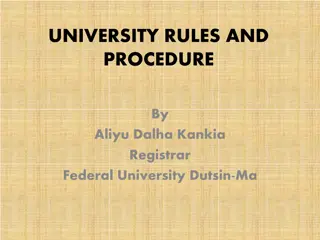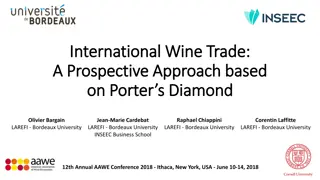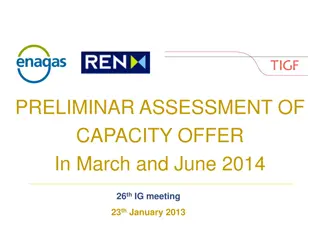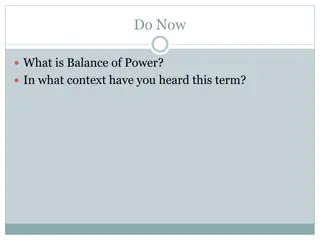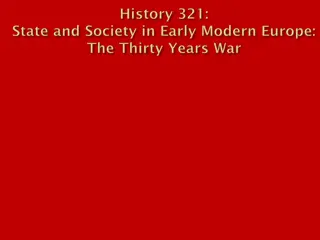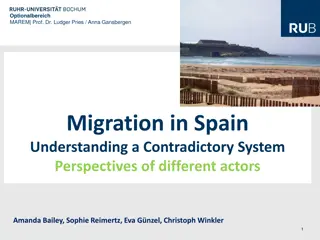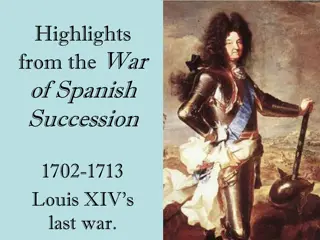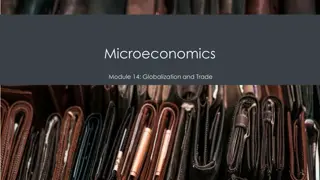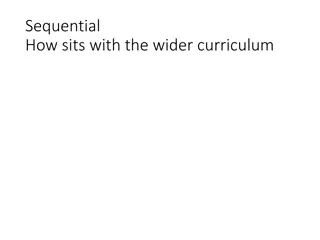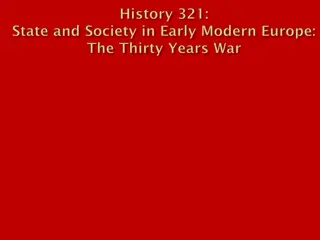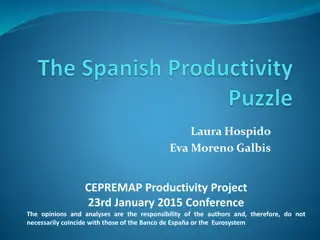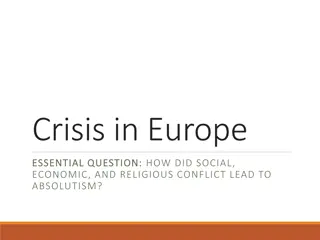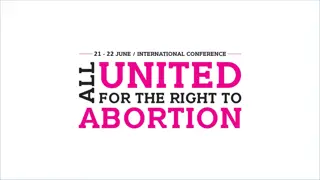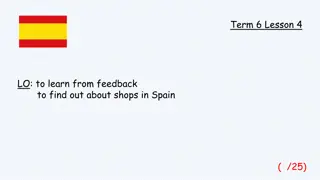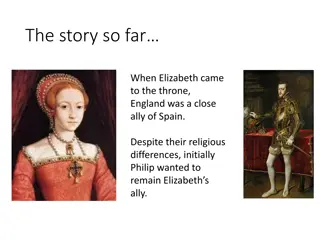Absolute Monarchs in Europe: Philip II of Spain
Explore the reign of Philip II of Spain, a powerful absolute monarch during the 16th century. Discover how Philip's leadership, religious zeal, and aggressive policies shaped Spain's empire and European politics. Learn about Spain's wealth from American mines, military strength, and conflicts with Protestant nations, embodying the era of absolute monarchs in Europe.
Download Presentation

Please find below an Image/Link to download the presentation.
The content on the website is provided AS IS for your information and personal use only. It may not be sold, licensed, or shared on other websites without obtaining consent from the author.If you encounter any issues during the download, it is possible that the publisher has removed the file from their server.
You are allowed to download the files provided on this website for personal or commercial use, subject to the condition that they are used lawfully. All files are the property of their respective owners.
The content on the website is provided AS IS for your information and personal use only. It may not be sold, licensed, or shared on other websites without obtaining consent from the author.
E N D
Presentation Transcript
World History Chapter 5 Absolute Monarchs in Europe 1500-1800 Pages 152-183
Section 1 Spain s Empire and European Absolutism Pages 155-161 During a time of religious and economic instability, Philip II ruled Spain with a strong hand.
Charles V, a devout Catholic, had fought Muslims and also opposed Lutherans. He had acquired and controlled lands from Spain to Italy, including Germany. In 1555, he unwillingly agreed to the Peace of Augsburg, which allowed the German princes to choose the religion of their territory. 1. Who was the leader of Spain prior to Philip II? How did Philip become leader? The following year, Charles V divided his immense empire and retired to a monastery. To his brother Ferdinand, he left Austria and the Holy Roman Empire. His son, Philip II, inherited Spain, the Spanish Netherlands, and the American colonies.
Philip was shy, serious-and like his father-deeply religious. He was hard-working and deeply suspicious. Above all, Philip could be aggressive for the sake of his empire. 2. Describe Spanish power under Philip II. In 1580, the king of Portugal died without an heir. Because Philip was the king s nephew, he seized the Portuguese kingdom. Counting Portuguese strongholds in Africa, India, and the East Indies, he now had an empire that circled the globe.
By 1600, American mines had supplied Spain with an estimated 339,000 pounds of gold. Between 1550 and 1650, roughly 16,000 tones of silver bullion were unloaded from Spanish galleons, or ships. 3. How much wealth did Spain acquire? The king of Spain claimed between a fourth and a fifth of every shipload of treasure as his royal share. With this wealth, Spain was able to support a large standing army of about 50,000 soldiers.
When Philip assumed the throne, Europe was experiencing religious wars caused by the Reformation. However, religious conflict was not new to Spain. The Reconquista, the campaign to drive Muslims from Spain, had been completed only 64 years before. 4. How was Philip a defender of Catholicism? In addition, Philip s great-grandparents Isabella and Ferdinand had used the Inquisition to investigate heretics, or nonbelievers in Christianity. Philip himself launched an attack against the Ottoman Empire in 1571 with over 200 Spanish and Venetian ships. Again, in 1588, Philip launched the Spanish Armada against queen Elizabeth I in an attempt to punish the Protestant country, the Spanish were defeated.
During the 16thand 17thcenturies Spain produced great works of art. Monarchs and nobles became patrons of the arts because of their great wealth. El Greco (Domenikos Theotokopoulos), born in Crete but spent much of his adult life in Spain, created many paintings. He chose brilliant, sometimes clashing colors, distorted the human figure, and expressed emotion symbolically. 5. What was the golden age of Spanish art and literature? Diego Valazquez, on the other hand, reflected the pride of the Spanish monarchy, often painting the royal family 50 years after El Greco. Don Quixote de la Mancha, written by Miguel de Cervantes is often called the birth of the modern European novel. Quixote is a poor Spanish nobleman who went a little crazy after reading too many books about heroic knights.
Inflation or a decline in the value of money in Spain was caused by a growing population, which needed goods and services. This caused an increase in the prices for these goods and services. 6. What caused the Spanish Empire to weaken? Silver bullion also flooded Spain causing the value of silver to decrease. It took more silver to buy ordinary goods and services. Expelling Jews and Moors (Muslims) around 1500 caused Spain to lose valuable artisans and business- people. In addition, Spain s nobles did not have to pay taxes, thus putting the tax burden on the poor. As a result, Spain did not develop a strong middle-class.
Silver flooded the market causing its value to drop. Gold and silver were not used to buy Spanish goods, but to buy foreign goods. 7. Why didn t Spain s economy benefit from the gold and silver from the Americas? Most Spanish cloth and manufactured goods were too expensive, thus Spaniards bought much of what they needed from France, England, and the Netherlands. Gold and silver were also used to pay off debts, borrowed money from German and Italian bankers. The economy was so feeble that Philip had to declare the Spanish state bankrupt three times.
In Spanish Netherlands, Philip had to maintain an army to keep his subjects under control. The Dutch had little in common with their Spanish rulers. Spain was mostly Catholic and the Netherlands had many Calvinist congregations. Spain had a sluggish economy, while the Dutch had a prosperous middle class. Philip raised taxes in the Netherlands and took steps to crush Protestantism. 8. What was the Dutch Revolt? In response, in 1566, angry Protestant mobs swept through Catholic churches. Philip sent an army to punish the rebels, led by the Spanish duke of Alva. On a single day in 1568, the duke executed 1,500 Protestants and suspected rebels. The Dutch continued to fight the Spanish for another 11 years. Finally gaining independence for seven northern provinces in 1579. The ten southern provinces (present-day Belgium) were Catholic and remained under Spanish control.
The United Provinces of the Netherlands practiced religious toleration. Each province had an elected governor, whose power depended on the support of merchants and landholders. 9. What was the Netherlands like in the 1600s? The stability of the government allowed the Dutch people to concentrate on economic growth. As in Florence, Italy in the 1400s, many wealthy Dutch merchants sponsored many great artists. Rembrandt van Rijn was the greatest Dutch artist of the period. His paintings used sharp contrasts of light and shadow to draw attention to his focus. Jan Vermeer chose to paint domestic, indoor settings.
European rulers wanted to be absolute monarchs, kings or queens who held all of the power within their states boundaries. Their goal was to control every aspect of society. Absolute monarchs believed in divine right, the idea that God created the monarchy and the monarch acted as God s representative on Earth. 10. What was the theory of Absolutism? An absolute monarch answered only to God, not to his or her subjects. The 17thcentury was a period of great upheaval in Europe. Religious and territorial conflicts between states led to almost continuous warfare. This led governments to build huge armies funded by taxing the poorest of the population. This led to more unrest and sometimes the peasants revolted. In response, monarchs tried to impose order by increasing their power.
Section 2 The Reign of Louis XIV Pages 162-168 Louis s abuse of power led to revolution that would inspire the call for democratic government throughout the world.
France was torn by eight religious wars between Catholics and Protestants from 1562 to 1598. In 1589, a Protestant prince, Henry of Navarre, became King Henry IV. In 1593, he changed religions and became Catholic to please the majority of his people. In 1598, he issued an order called the Edict of Nantes. It gave Huguenots French Protestants the right to live in peace and have their own churches in some cities. 1. What changes were occurring in France? Henry rebuilt the French economy and brought peace to the land. He was followed by his son, Louis XIII, a weak king. However, Louis had a very capable chief minister, Cardinal Richelieu. Richelieu ruled the land for Louis and increased the power of the crown.
In 1643, Louis XIV became king at the age of five. Cardinal Mazarin, who succeeded Richelieu as Minister, ruled for Louis until he was 22. Louis became a powerful ruler, who had total control of France. He kept the nobles out of government and used government officials called intendants. These intendants answered only to Louis. 2. How did the monarchy get stronger in France? How did Louis make sure he kept his power? Louis worked hard to increase the wealth of France. His chief minister of finance, Jean Baptiste Colbert, tried to build French industry. He wanted to persuade French people to buy French-made goods and not those from other countries. He also encouraged people to settle in the new French colony of Canada in North America. The fur trade there brought wealth to France.
Louis enjoyed a life of luxury at his court. Sometimes called the Sun King , based on a play. He built a huge and beautiful palace at Versailles near Paris. 3. What changes did Louis make? He also made sure that nobles had to depend on his favor to advance in society. Louis made France the most powerful nation in Europe. France had a larger population and a bigger army than any other country.
Louis made some costly mistakes against neighboring countries. Louis, after winning some wars against these countries, he became bolder and tried to seize more land. Other nations allied to stop France in the late 1680s. The high cost of these wars combined with poor harvests to produce problems at home in France. 4. How did Louis XIV bring disaster to France? The final war fought in Louis s time was fought over succession to the throne of Spain and lasted from 1700 to 1713. In this War of the Spanish Succession, France and Spain attempted to set up united thrones. The rest of Europe felt threatened and joined in war against them. Both France and Spain were forced to give up some of their American and European colonies to England. England was the new rising power.
Section 3 Central European Monarchs Clash Pages 169-173 After a period of turmoil, absolute monarchs ruled Austria and the Germanic state of Prussia.
Germany had suffered from religious wars that ended in 1555. Rulers of each German state agreed that they would decide whether their lands would be Catholic or Protestant. Relations between sides became tense over the next decades. Then in 1618, a new war broke out and lasted for 30 terrible years. Thirty Years War During the first half of the war, Catholic forces led by Ferdinand, the Holy Roman Emperor, won. However, Germany suffered because he allowed his large army to loot towns. 1. What caused the Thirty Years War? Then the Protestant king of Sweden, Gustavus Adolphus, won several battles against him. In the last years of the war, France helped the Protestants. Although France was a Catholic nation, Richelieu feared the growing power of the Hapsburg family, which was headed by Frederick.
The Thirty Years War ended in 1648 with the Peace of Westphalia. It had been a disaster for Germany. About 4 million people had died, and the economy was in ruins. It took Germany two centuries to recover. The peace treaty weakened the power of Austria and Spain. But it made France stronger. The French gained German territory. 2. What was the outcome of the war? The treaty also made German princes independent of the Holy Roman Emperor. It ended religious wars in Europe. Lastly, the treaty introduced a new way of negotiating peace a method still used today. All states involved in the fighting meet to settle the problems of a war and decide the terms of peace.
The formation of strong states took place slowly in central Europe. The economies there were less developed than in western Europe. 3. What was life like in central Europe? Most people were still peasants. This region had not built an economy based on cities and commercialism. Nobles enjoyed great influence. This helped them keep the serfs on the land and prevent the rise of strong rulers.
The Hapsburg family ruled Austria, Hungary, and Bohemia. Their empire linked many different peoples Czechs, Hungarians, Italians, Croatians, and Germans. 4. Who were the Hapsburgs? Maria Theresa, the daughter of Charles VI, was empress of Austria in the mid-1700s. She managed to increase her power and reduce that of the nobles. She was opposed by the kings of Prussia, a new powerful state in northern Germany.
Like Austria, Prussia rose to power in the late 1600s. Like the Hapsburgs of Austria, Prussia s ruling family, the Hohenzollerns, also had ambitions. Prussia was a strong state that gave much power to its large, well-trained army. 5. What was Prussia? In 1740, Frederick the Great of Prussia invaded one of Maria Theresa s lands. Austria fought hard to keep the territory, but lost. Still, in fighting the War of the Austrian Succession, Maria Theresa managed to keep the rest of her empire intact.
Austria and Prussia fought again, beginning in 1756. 6. What effect did fighting between Austria and Prussia have on Britain? In the Seven Years War, Austria abandoned Britain, its old ally, for France and Russia. Prussia joined with Britain. The Prussians and British won. In that victory, Britain gained economic domination of India.
Section 4 Absolute Rulers of Russia Pages 174-177 Peter the Great made many changes in Russia to try to make it more like western Europe.
Ivan III had begun centralizing the Russian government. His son, Vasily, continued the work of adding territory to the growing Russian state. Ivan s grandson, Ivan IV, was called Ivan the Terrible. He came to the throne in 1533, when he was three years old. 1. Who was Ivan the Terrible? At first, landowning nobles, known as boyars, tried to control Ivan. Eventually, he ruled successfully on his own. He added lands to Russia and gave the country a code of laws. After his wife, Anastasia, died, however, his rule turned harsh. He used secret police to hunt down enemies and kill them. Ivan even murdered his oldest son.
A few years after the death of Ivan the Terrible, Russian nobles met to name a new ruler. They chose Michael Romanov, the grandnephew of Ivan the Terrible s wife. He began the Romanov dynasty, which ruled Russia for about 300 years. 2. Who was Peter the Great? The Romanovs restored order to Russia. In the late 1600s, Peter I came to power. He was called Peter the Great because he was one of Russia s greatest reformers. He began an intense program of trying to modernize Russia. He also continued the trend of increasing the czar s power.
When Peter came to power, Russia was still a land of boyars and serfs. Serfdom lasted much longer in Russia than it did in western Europe. It continued into the mid-1800s. When a Russian landowner sold a piece of land, he sold the serfs with it. Landowners could give away serfs as presents or to pay debts. It was also against the law for serfs to run away from their owners. 3. Why did Peter the Great visit Europe? Most boyars knew little of western Europe. But Peter admired the nations of western Europe. He traveled in Europe to learn about new technology and ways of working. It was the first time a czar traveled in the West.
Peter the Great wanted Russia to be the equal of the countries of western Europe. He wanted Russia to be strong both in its military and in its trade. 4. What changes did Peter the Great make? Peter also changed Russia through westernization. He took several steps to make Russia more western. He brought in potatoes as a new food. He began Russia s first newspaper. He promoted education. He gave more social status to women. He also told nobles to adopt Western clothes.
He put the Russian Orthodox Church under his control. He reduced the power of nobles. He built up the army and made it better trained. Peter also knew Russia needed a seaport that would make it easier to travel to the west. 5. How did Peter the Great increase his power? He fought a long war with Sweden to gain land along the shores of the Baltic Sea. There he built a grand new capital city, St. Petersburg. By the time of Peter s death in 1725, Russia was an important power in Europe.
Section 5 Parliament Limits the English Monarchy Pages 180-183 Absolute rulers in England were overthrown, and Parliament gained power.
When Queen Elizabeth I died, her cousin James, king of Scotland, became king of England. 1. Why was there tension between the monarchy and Parliament? The reign of James I began a long series of struggles between the king and Parliament. They fought over money. James s religious policies also angered the Puritans in Parliament.
During the reign of Jamess son, Charles I, there was a continued conflict between the king and Parliament. Parliament forced Charles to sign the Petition of Right in 1628. 2. How did Charles I make Parliament angry? By signing, Charles agreed that the king had to answer to Parliament. But he then dissolved Parliament to raise money without it.
When Charles tried to force Presbyterian Scots to follow the Anglican Church, Scotland threatened to invade England. Charles needed money to fight. 3. Who fought the English Civil War? When Charles called a new Parliament to get money, it quickly passed laws to limit his power. Soon England was fighting a civil war. Charles and his Royalists were opposed by the supporters of Parliament. Many of Parliament s supporters were Puritans.
The English Civil War lasted from 1642 to 1649. Under the leadership of Oliver Cromwell, the forces of the Puritans won. 4. What happened as a result of the English Civil War? They tried and executed Charles for treason against Parliament. This was the first time a king had faced a public trial and execution. Cromwell became a military dictator, ruling until 1658. He crushed a rebellion in Ireland and tried to reform society at home.
Soon after Cromwells death, the government collapsed. Parliament asked Charles s older son to restore the monarchy. Charles II s rule beginning in 1660 is called the Restoration. Charles II s reign was calm. Parliament passed an important guarantee of freedom called habeas corpus. It gave every prisoner the right to get an order to be brought before a judge. The judge would then decide whether the prisoner should be tried or set free. This kept monarchs from putting people in jail for opposing them. It also meant that people would not stay in jail forever without a trial. 5. What was the Restoration?
After Charles IIs death in 1685, his brother became King James II. His pro-Catholic policies angered the English. They feared that he would restore Catholicism. In 1688, seven members of Parliament contacted Jame s older daughter, Mary, and her husband, William of Orange, prince of the Netherlands. 6. Why did the Glorious Revolution take place? Both were Protestants. The members of Parliament wanted William and Mary to replace James II on the throne. James was forced to flee to France. When that took place, the bloodless revolution was called the Glorious Revolution.
William and Mary agreed to rule according to the laws made by Parliament. That is, Parliament became their partner in governing. England was now a constitutional monarchy, where laws limited the ruler s power. 7. How was the power of the monarchy decreased in England? William and Mary also agreed to accept the Bill of Rights. It guaranteed the people and Parliament certain rights. By the 1700s, it was clear that the government of England would come to a standstill if the monarch disagreed with the Parliament or vice versa. This led to the development of the cabinet. This group of government ministers became the first link between the monarch and Parliament.
